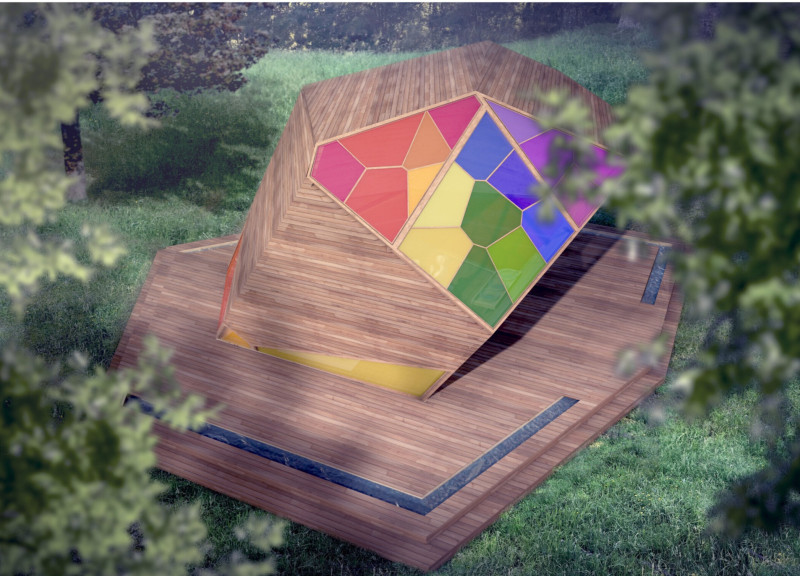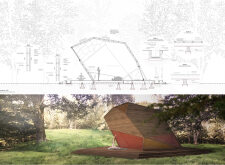5 key facts about this project
The design emerges as a thoughtful response to its natural environment, with a focus on blending functionality and user experience. Set among a group of seven trees, the layout encourages interaction with nature while also accommodating activities such as flower essence making. The primary concept aims to harness natural light and create an atmosphere that supports mindfulness and well-being.
Site Orientation and Sunlight Access
The project's orientation is carefully planned to enhance sunlight exposure, which is important for the essence-making process. By extending the building outward on the northern side, the design allows ample natural light to enter the internal spaces while simultaneously providing shaded areas ideal for meditation. This approach ensures that the spaces serve their purpose while also contributing to a peaceful environment.
Spatial Organization and Functional Flow
The layout reflects a deliberate organization of spaces that effectively harmonizes different functions. Areas designated for flower essence making are placed in a manner that does not obstruct meditation zones. This thoughtful arrangement prioritizes user convenience, allowing individuals to move easily from one space to another while fully engaging in their activities.
Materiality and Structural Considerations
Timber is used as the primary construction material, reflecting a commitment to environmental sustainability. Plywood is specifically mentioned for the building’s base structure, providing both strength and cohesion with the organic design. The inclusion of a waterproofing membrane and vapour barrier further enhances the building's durability, ensuring it can withstand the elements and perform efficiently over time.
Design Details and Internal Dynamics
The project pays close attention to energy flow within the interior spaces. Internal walls are angled to encourage natural energy movement, creating a more vibrant atmosphere. Features such as a fireplace and a water rill add to the internal experience, fostering a connection between occupants and their surroundings. The integration of these natural elements highlights the important relationship between the building and the environment.






















































